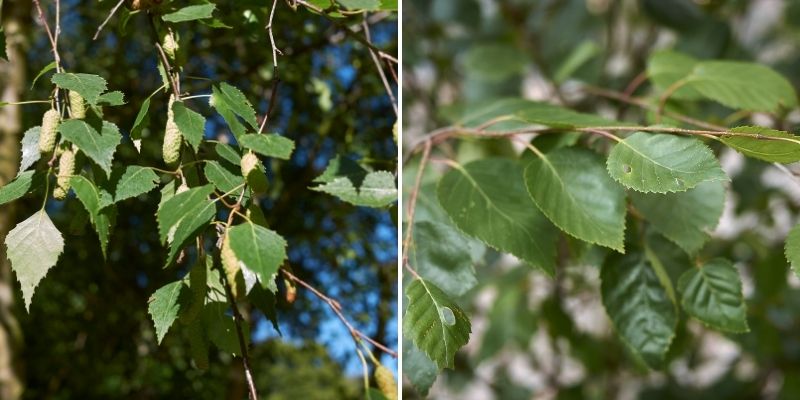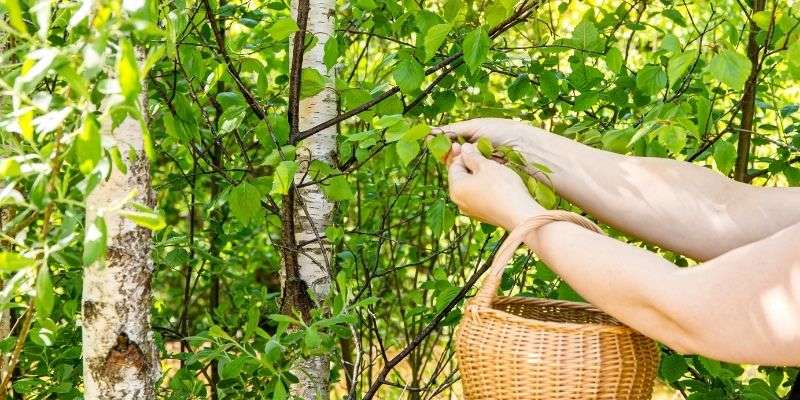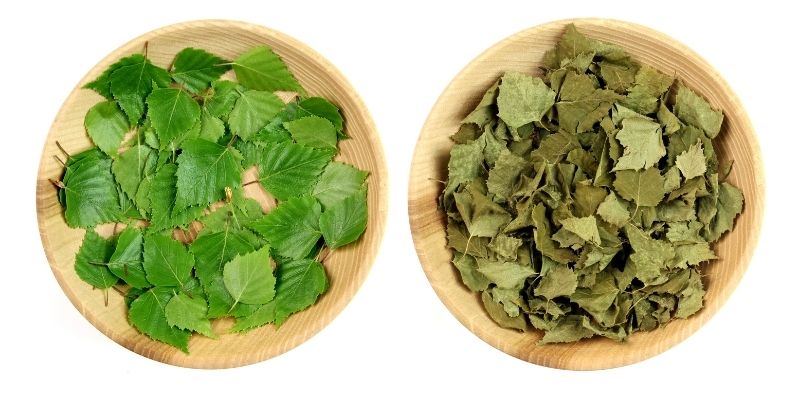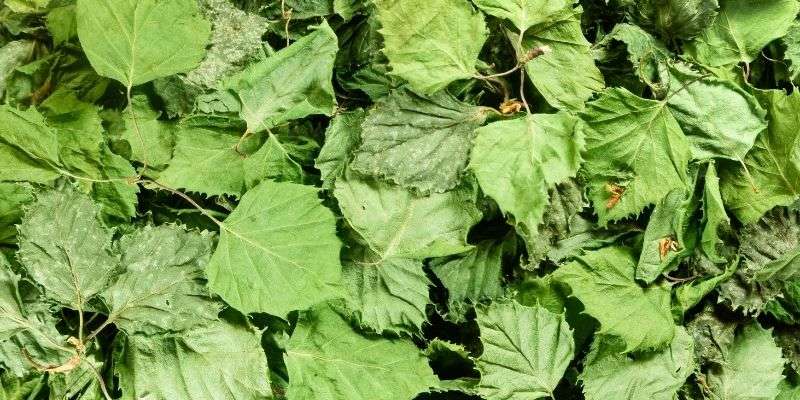Renowned for its decorative bark and much appreciated as an ornamental tree, the birch can also be used medicinally. While birch sap is much talked about currently, leaves, buds, bark and catkins can also help relieve certain ailments. Possessing numerous virtues, birch leaves are used as an infusion called “birch juice”, not to be confused with birch water, which corresponds to the tree’s sap. To learn more, discover our tips for successful harvesting and drying of birch leaf. You can thus enjoy all the benefits of a draining decoction to cleanse your body and eliminate toxins!
Which birch to choose?
The birch used mainly in phytotherapy is Betula pendula (also called Betula verrucosa or Betula alba). In French it is known as bouleau commun, bouleau blanc or bouleau verruqueux. It bears glabrous twigs and doubly dentate leaves, triangular in shape with a fine, long tip and equipped with a long petiole.
The species Betula pubescens (downy birch) can also be used. Very similar to Betula verrucosa, it is distinguished by slightly felted, villous leaves that are simply dentate.

Left: Betula pendula and right: Betula pubescens
When to harvest birch leaves?
Birch leaves can be harvested in spring, after budburst when they are tender. Pick young leaves in dry, sunny weather (no dew). Carry out harvesting in the morning, preferably before 10 am, because the plant deteriorates when the sun gets too strong. During collection, protect harvested leaves as much as possible by keeping them out of direct sunlight (in a fabric bag, a lidded basket or a basket with high sides, for example). Avoid harvesting leaves from birches close to roads or cultivated fields: pollution and phytosanitary treatments make leaves unsuitable for consumption. Finally, avoid waste and harvest only the quantity of leaves you need.

How to dry the leaves?
Check your leaves. If they are not dirty or excessively dusty, washing is not necessary. This will help drying.
Air drying
Use wooden crates or wicker baskets that allow good aeration and therefore optimal drying. If you do not have any, ask your greengrocer or local shop who may be able to provide crates free of charge. Handy people can make their own drying rack by stretching mosquito netting or a fine cloth over a wooden frame. If you choose a plastic or metal tray, place leaves on a clean tea towel and turn them every day. Spread birch leaves in a single layer. Place them in a dark (attic, cupboard), ventilated and dry place and leave to dry for about a week.
Drying in a conventional oven
Preheat oven to the lowest possible temperature. Ideal is 40°C. Arrange birch leaves on the oven tray so they do not overlap. Bake the tray for 30 minutes on the lowest shelf. Then turn the leaves and return to the oven for a further 45 minutes. Finally, switch off the oven and leave leaves to cool inside for another hour.
You can also dry leaves in an electric dehydrator. In that case, follow manufacturer’s instructions for drying time and temperature.
Before storing, check that leaves are completely dry as they may mould if any moisture remains. If they are not crisp when handled, leave to dry further. Keep leaves whole, do not crush them to preserve their properties as much as possible.
Then, store them away from light in a glass or metal container (jam jar, metal tea tin), in a paper bag or fabric bag. They keep for one year. Label your dried leaf harvest with the plant name and date of harvest, and optionally the place of collection.

Fresh and dried birch leaves
How to make birch leaf tea?
It is possible to undergo a course of birch leaves twice a year, in spring or autumn. Do not exceed 3 cups per day and consume the infusion between meals. A course generally lasts 20 days. Bring one litre of water to the boil. Off the heat, infuse 20 to 40 g of dried birch leaves for 10 minutes. To make the infusion more effective, you can add 1 g of bicarbonate of soda when the infusion is at about 40°C. Indeed, bicarbonate helps dissolve resinous compounds. Be aware that with 40 g of leaves the woody, resinous taste will be much stronger and therefore more difficult to drink. Important: drink plenty of fluids during a course of birch leaves, as they have a strong diuretic effect.
What are the benefits of birch leaves?
Rich in saponins and flavonoids, birch leaves have many properties, notably diuretic, depurative, anti-inflammatory and antiseptic. They are particularly recommended for gout and urinary infections since they promote elimination of the body’s wastes by greatly increasing urine volume. Birch leaves would also have a beneficial effect for rheumatism, arthritis, osteoarthritis and rheumatoid polyarthritis. With anti-infective, anti-inflammatory and healing properties, birch leaves help treat minor skin complaints. Finally, they may also help combat water retention, oedema and cellulite.
Contraindications and warnings
Consumption of birch leaf tea is contraindicated for pregnant or breastfeeding women, children under 12, people allergic to birch pollen or to paracetamol, and those suffering from severe heart or kidney failure.
Consult your doctor or a health professional before starting any course. Use of plants in phytotherapy is not without risk.

































Comments